 |
North
High School Wall of Honor
Willard Harding Hutchins
Class of August, 1940
|
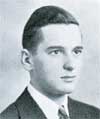 |
 |
|
Research done by Claradell Shedd, Class of 1953. |
| Willard
Harding Hutchins |
| Bill
graduated as member of North High's class of August, 1940. His next
of kin was Mr. Robert D. Hutchins, 1238 11th Street, Des Moines, IA.
Bill's service number was 321-66-56. |
| Willard Harding Hutchins |
 |
| Year |
|
Rank/Rating |
|
Status |
 |
| August,
1940 |
x |
x |
x |
Graduated from North High,
Des Moines, IA |
| date |
|
Employed
|
|
Where and when |
| Jun 19,
1941 |
x |
US Navy |
x |
Enlisted in Des Moines |
| date |
x |
Training |
x |
One month of Basic Training;
Great Lakes, Illinois |
| September
30, 1941 |
x |
Stationed |
x |
USS Texas (BB-35). Onboard
until 30 Apr 1942 |
| May 11,
1942 |
x |
Stationed |
x |
USS Kankakee (AO-39).
Onboard until 30 Jun 1944 |
| December
22, 1944 |
x |
Stationed |
x |
USS Oklahoma City (CL-91).
Onboard until 1 Jun 1946 |
| November
1, 1946 |
x |
Stationed |
x |
Re-enlisted in Merchant
Marines; LST-285 |
| Jan 24,1947 |
x |
Discharged |
x |
Where? |
| July 31,
1948 |
x |
Family |
x |
Married Dorothy Fry (from
Storm Lake) in Des Moines |
| aft 1948
|
x |
Employment |
x |
FBI in California |
| date |
x |
Employment |
x |
Taught at a California
junior college near Sacramento |
| Dec 26,
2011 |
x |
Deceased |
x |
Sacramento, California |
| aft Dec
26, 2011 |
x |
Buried |
x |
Sacramento, California |
|
USS
Texas (BB-35)
USS Texas (BB-35), the second ship of the United States Navy named
in honor of the US state of Texas, is a New York-class battleship.
The ship was launched on 18 May 1912 and commissioned on 12 March
1914.
Soon after her commissioning, Texas saw
action in Mexican waters following the "Tampico Incident"
and made numerous sorties into the North Sea during World War
I. When the United States formally entered World War II in 1941,
Texas escorted war convoys across the Atlantic, and later shelled
Axis-held beaches for the North African campaign and the Normandy
Landings before being transferred to the Pacific Theater late
in 1944 to provide naval gunfire support during the Battles of
Iwo Jima and Okinawa. Texas was decommissioned in 1948, having
earned a total of five battle stars for service in World War II,
and is now a museum ship near Houston, Texas.
Among the world's remaining battleships, Texas
is notable for being the only remaining World War I-era dreadnought
battleship, though she is not the oldest surviving battleship:
Mikasa, a pre-dreadnought battleship ordered in 1898 by the Imperial
Japanese Navy, HMS Warrior, the world's first all-steel warship
and HMS Victory, launched in 1765 (Nelson's flagship at The Battle
of Trafalgar), are all older than Texas. She is also noteworthy
for being one of only seven remaining ships and the only remaining
capital ship to have served in both World Wars.
Among US-built battleships, Texas is notable
for her sizeable number of firsts: the first US Navy vessel to
house a permanently assigned contingent of US Marines, the first
US battleship to mount anti-aircraft guns, the first US ship to
control gunfire with directors and range-keepers (analog forerunners
of today's computers), the first US battleship to launch an aircraft,[10]
from a platform on Turret 2, one of the first to receive the CXAM-1
version of CXAM production radar in the US Navy, the first US
battleship to become a permanent museum ship, and the first battleship
declared to be a US National Historic Landmark.
Soon after war broke out in Europe in September 1939, Texas began
operating on the Neutrality Patrol, an American attempt to keep
the war out of the western hemisphere. Later, as the United States
moved toward more active support of the Allied cause, the warship
began convoying ships carrying Lend-Lease matériel to the
United Kingdom. In February 1941, the US 1st Marine Division was
activated aboard Texas. On 1 February, Admiral Ernest J. King
hoisted his flag as Commander-in-Chief of the re-formed Atlantic
Fleet aboard Texas. That same year, while on Neutrality Patrol
in the Atlantic, Texas was stalked unsuccessfully by the German
submarine U-203.
Convoy duty
Sunday, 7 December 1941, found the battleship at Casco Bay, Maine,
undergoing a rest and relaxation period following three months
of watch duty at Naval Station Argentia, Newfoundland. After 10
days at Casco Bay, she returned to Argentia and remained there
until late January 1942, when she got underway to escort a convoy
to England. After delivering her charges, the battleship patrolled
waters near Iceland until March when she returned home. Around
this time, the secondary battery was reduced to six 5-inch guns
and the light AA battery was greatly increased, with the two 1.1-inch/75
caliber quad mount guns replaced by 6 (later 10) quad mount 40
mm (1.6 in) Bofors and 44 20 mm (0.79 in) Oerlikon cannons, the
attack on Pearl Harbor having demonstrated the need for this.
For the next six months, she continued convoy-escort missions
to various destinations. On one occasion, she escorted Guadalcanal-bound
marines as far as Panama; on another, the warship screened service
troops to Freetown, Sierra Leone, on the west coast of Africa.
More frequently, she made voyages to and from the United Kingdom
escorting both cargo- and troop-carrying ships.
Operation Torch
Main article: Operation Torch
On 23 October 1942, Texas embarked upon her first major combat
operation when she sortied with Task Group 34.8 (TG 34.8), the
Northern Attack Group for Operation Torch, the invasion of North
Africa. The objective assigned to this group was Port Lyautey
in French Morocco. The warships arrived off the assault beaches
near the village of Mehedia early in the morning of 8 November
and began preparations for the invasion. Texas transmitted Lt.
General Dwight D. Eisenhower's first "Voice of Freedom"
broadcast, asking the French not to oppose Allied landings on
North Africa. When the troops went ashore, Texas did not go into
action immediately to support them. At that point in the war,
the doctrine of amphibious warfare was still embryonic. Many Army
officers did not recognize the value of prelanding bombardments.
Instead, the Army insisted upon attempting a landing by surprise.
Texas entered the battle early in the afternoon when the Army
requested her to fire upon a Vichy French Army ammunition dump
near Port Lyautey. One more gunfire mission was provided on the
10th before the cease fire on 11 November. Thus, unlike in later
operations, she expended only 273 rounds of 14-inch shells and
6 rounds of 5-inch shells. During her short stay, some of her
crewmen went ashore to assist in salvaging some of the ships that
had been sunk in the harbor. On 16 November, Texas departed North
Africa for the East Coast of the United States in a task force
along with Savannah, Sangamon, Kennebec, four transports, and
seven destroyers.
The young news reporter Walter Cronkite
was on board Texas starting in Norfolk, Virginia, through her
service off the coast of North Africa, and thence back to the
US. On the return trip, Cronkite was flown off Texas in one of
her OS2U Kingfisher aircraft when Norfolk was within flying distance.
He was granted permission to be flown the rest of the distance
to Norfolk so that he could outpace a rival correspondent on Massachusetts
to return to the US and to issue the first uncensored news reports
to published about Operation Torch. Cronkite's experiences aboard
Texas launched his career as a war correspondent. |
|
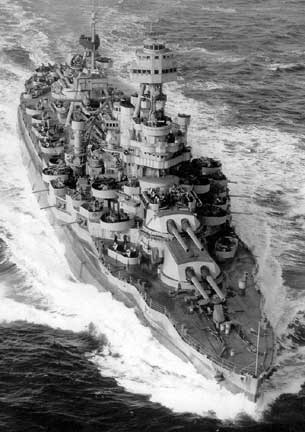 |
|
 |
| *Photo
and call signs of USS Texas (BB-35) |

November-Alpha-Delta-Victor |
|
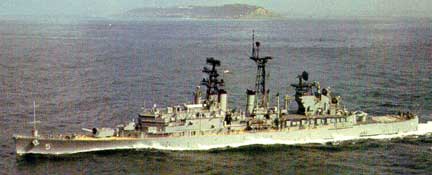 |
| *Photo and call signs
of USS Oklahoma City (CL-91) |
|
| USS Oklahoma City,
CL-91 Awards, Citations and Campaign Ribbons |
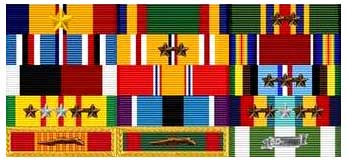 |
Precedence
of awards is from top to bottom, left to right
Top Row - Combat Action Ribbon - Navy Unit Commendation - Navy
Meritorious Unit Commendation (3)
Second Row - American Campaign Medal - Asia Pacific Campaign Medal
(2) - WWII Victory Medal
Third Row - Navy WWII Occupation Service Medal w/ASIA Clasp -
National Defense Service Medal - Armed Forces Expeditionary Medal
(3)
Fourth Row - Vietnam Service Medal (13) - Humanatarian Service
Medal - Sea Service Deployment Ribbon (9)
Fifth Row - Republic of Vietnam Gallantry Cross Unit Citation
w/Palm - Republic of Vietnam Civil Action 1st Class Unit Citation
w/Palm - Republic of Vietnam Campaign Medal |
|
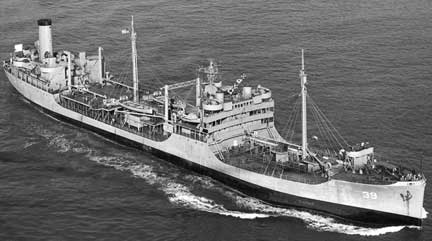 |
| *Photo and call signs
of USS Kankakee (AO-39) |
|
| USS Kankakee, AO-39
Awards, Citations and Campaign Ribbons |
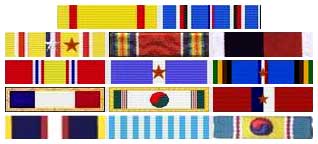 |
Precedence
of awards is from top to bottom, left to right
Top Row - China Service Medal (extended) - American Campaign Medal
Second Row - Asiatic-Pacific Campaign Medal (6) - World War II
Victory Medal - Navy Occupation Service Medal (with Asia or Europe
clasp)
Third Row - National Defense Service Medal - Korean Service Medal
(1) - Armed Forces Expeditionary Medal (1-Cuba, 1-Dominican Republic)
Fourth Row - Philippine Presidential Unit Citation - Korean Presidential
Unit Citation - Philippine Liberation Medal (1)
Fifth Row - Philippine Independence Medal - United Nations Service
Medal - Republic of Korea War Service Medal (retroactive) |
|
Willard Harding Hutchins
US Navy
Group/Division
|
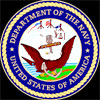

 |
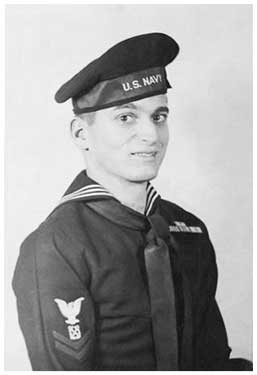
|
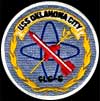
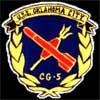
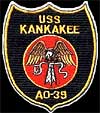 |
|
| References |
(1)
The World War II Army Enlistment Records contain information on
more than nine million indivdual enlistments. These records can
be found online at http://www.archives.gov/.
(2) The comprehensive list of names from North High's 1893-2018
graduation classes are from Claradell Shedd's North Des Moines
High School website. The names of North High School graduates
can be found online at: http://www.ndmhs.com/.
Willard Harding Hutchins's class page is: http://www.ndmhs.com/pages/yearclass1940(1990.50).html. |
|
|
Died: 12/26/11. |
| Music:
"Anchors Aweigh" |
Home
|
Back/allyears |
WWI |
WWII |
Korea |
Vietnam |
Afghanistan/Iraq |
Lyrics
|
Refs/Awards |
Contact
©2025-csheddgraphics All rights reserved.
All images and content are © copyright of their respective copyright
owners. |
|













